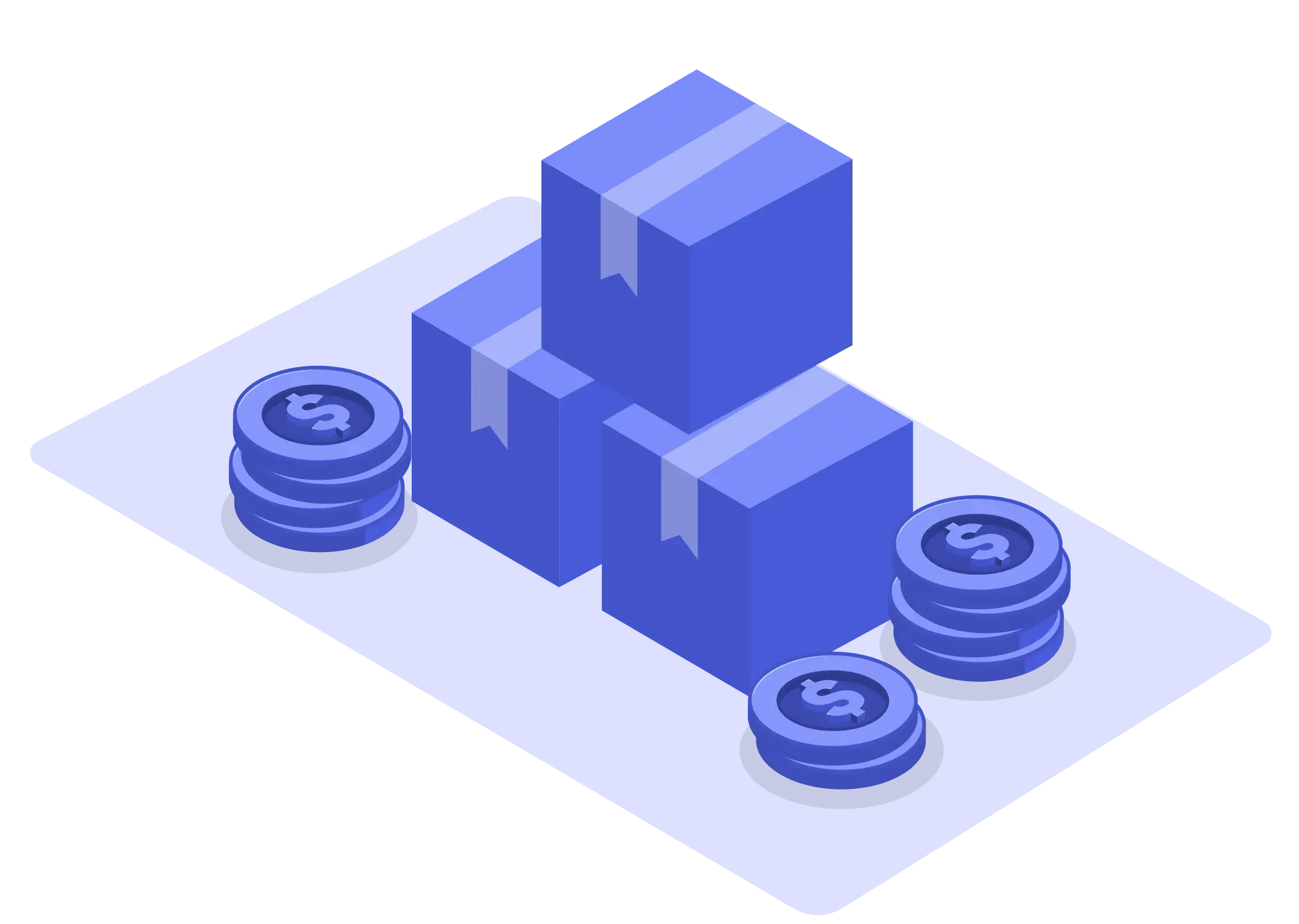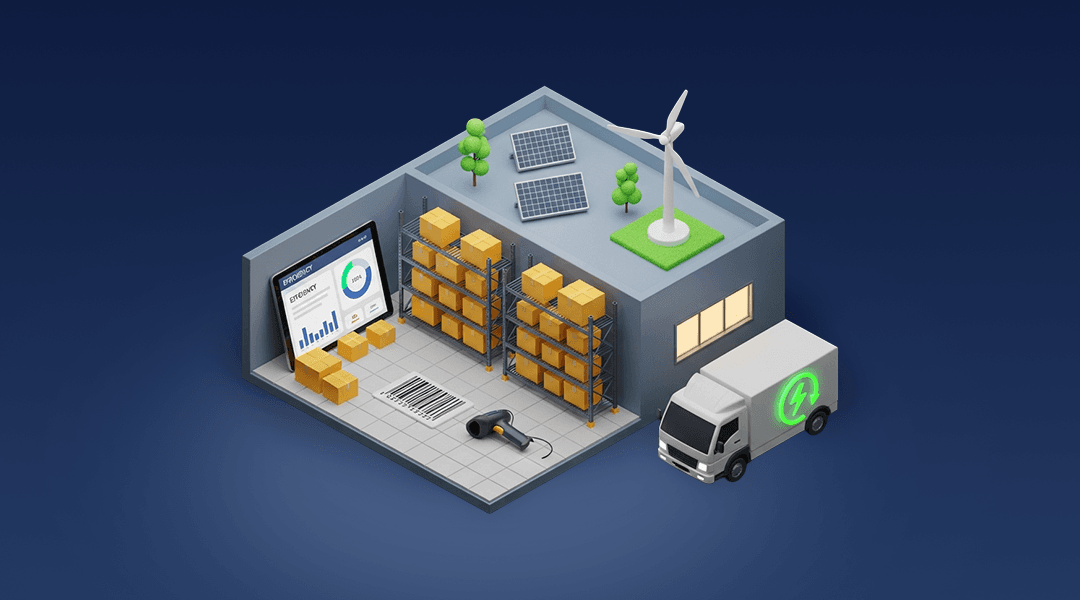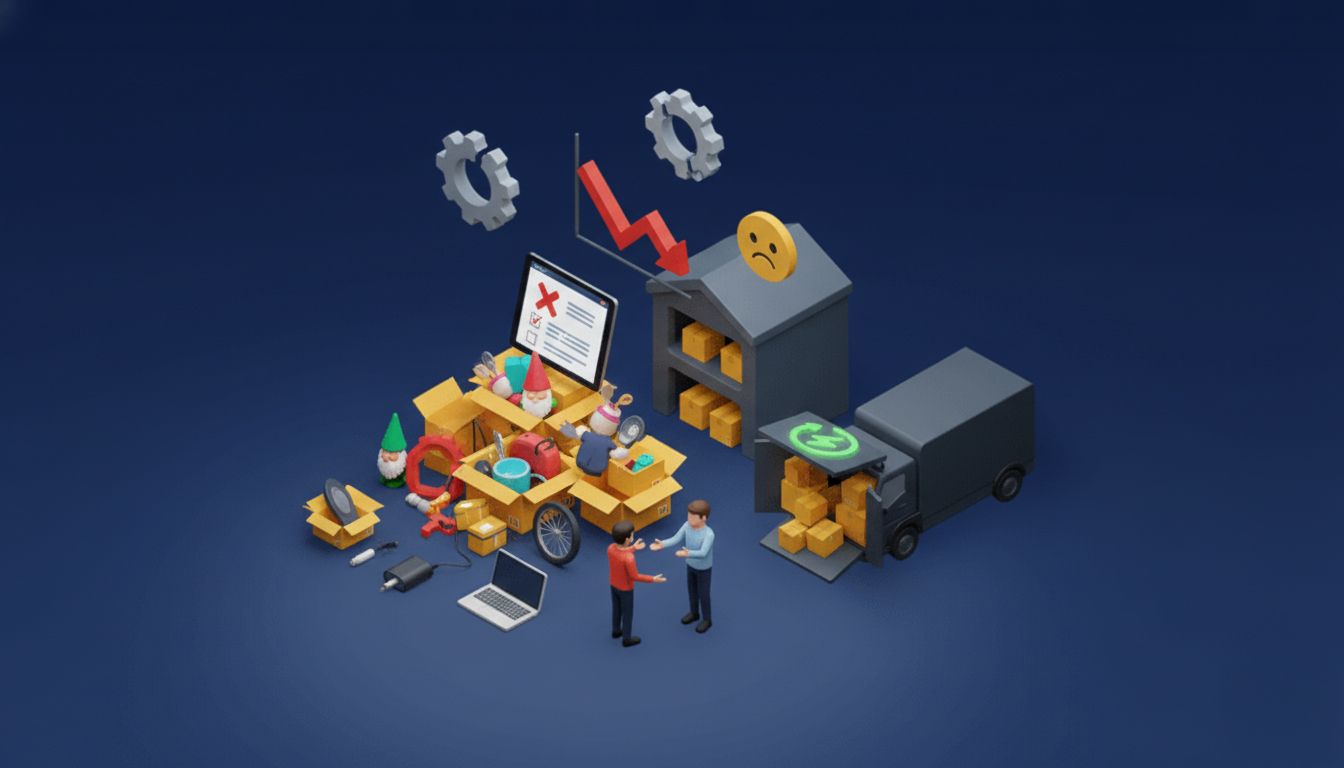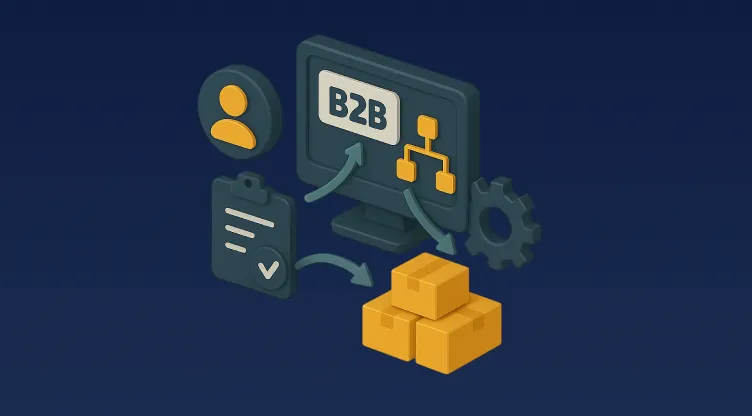Inventory Forecasting: Challenges, Benefits, and Best Practices

Table of Contents
Did you know that companies with accurate demand forecasting can reduce inventory costs by up to 20% and increase order fulfillment rates by 91% ? Fascinating, right? That’s what inventory and demand forecasting do.
Imagine the contrast: a business meeting customer demand at minimized costs versus one that is unable to cater to its customers while incurring high costs. Every newcomer or established company will likely choose the first option. However, despite its benefits, many business owners complain about its numerous challenges, such as demand variability, time consumption, lost sales, holding costs, and other unnecessary expenses.
This blog will explore the key challenges businesses face, the benefits of getting it right, and the best practices for winning more accurate inventory forecasts in today’s complex market.
Understanding Inventory Forecasting
Have you ever checked your horoscope to get a sense of what’s coming? Inventory forecasting is kind of like that—but instead of using star signs, it uses accurate data. It helps businesses determine how much stock they’ll need in the future by analyzing past sales, market trends, and other relevant information.
Essentially, it begins with gathering past sales data, then utilizing tools and models to identify patterns and forecast future demand. From there, businesses can make smarter decisions about what to order and when, so they avoid running out of products or having too much sitting on shelves. It’s not just a one-time thing; forecasts are updated regularly to account for factors such as new product launches, seasonal changes, or shifts in the market.
Common Challenges in Inventory Forecasting

Inventory forecasting plays a significant role in maintaining a smooth supply chain. When done right, it helps you keep just the right amount of stock—cutting costs and keeping customers happy. But let’s be honest: it’s not always smooth sailing (unless you're using a smart system like ours!). Here are some everyday challenges businesses face when forecasting inventory:
Inaccuracy in Data
Data Quality & Availability:
Inventory forecasting depends on good data. But if your data is outdated, missing, or full of errors, your predictions won’t be accurate—and that can hurt your business.
Inconsistent Data
If your data comes from various tools or platforms and isn't standardized, it can throw off your forecasts.
Data Silos
When teams don’t share data or use separate systems, it’s hard to see the complete picture. That means you could miss key demand trends.
Demand Fluctuations
Varying Demands:
People’s tastes change fast, and it’s tough to predict what they’ll want next—especially when trends shift suddenly.
Factors Affecting Sales:
Factors such as inflation, economic slowdowns, or viral marketing campaigns can significantly impact what sells and what doesn’t.
Lack of Proper Tools
Time-Consuming Processes:
Almost 48% of small businesses still manage their inventory manually. That wastes time and often leads to mistakes.
Inability to Handle Large Datasets:
If you're dealing with tons of data, simple tools may not be enough. You need systems that can handle the load.
Integration Issue:
Bringing new forecasting tools into your existing setup, such as your ERP or CRM, can be a challenging task without the proper support.
Supply Chain Uncertainty
Long Wait Times:
If your suppliers take a while to deliver, it becomes harder to keep up with demand, leading to empty shelves or excessive stock.
Ripple Effects:
When something goes wrong in one part of your supply chain, it can mess up the entire flow, especially if you're dealing with suppliers across the globe.
Inventory Holding Costs:
To be safe, many businesses maintain a higher level of inventory than necessary. However, this ties up money andincreases storage costs.
Key Benefits of Accurate Inventory Forecasting
Improved Cash Flow
Let’s talk money—because running a business without good cash flow is like trying to drive a car without gas. When you forecast inventory accurately, you maintain healthy finances.
- Optimized Cash Flow Management: Approximately 82% of businesses fail due to insufficient cash. Forecasting helps you avoid tying up money in extra inventory so you can use it where it matters most.
- Move Products Faster: When you manage inventory effectively, items sell more quickly. This means cash comes in faster, too.
- Lower Borrowing Costs: With less extra stock sitting around, you may not need to borrow as much, saving on interest and loan fees.
Reduced Stockouts and Overstocking
Have you ever gone to a store only to find your favorite item missing? Or seen shelves overloaded with products no one’s buying? That’s poor inventory planning. It’s a big deal—retailers lost an estimated $1.77 trillion globally in 2023 due to poor inventory management.
- Always Have What Customers Want: Forecasting helps make sure the right products are on the shelves at the right time.
- Stop Losing Sales: No stock = no sales. Frustrated customers might not return.
- Avoid Waste: Excessive stock can result in markdowns, spoilage, or the need to discard items.
Enhanced Customer Satisfaction
When you get inventory right, your customers notice—and they’re more likely to come back.
- Faster Shipping and Service: Accurate forecasts help you fulfill orders quickly and efficiently.
- Products Always Available: Customers can count on you to have what they need, when they need it.
- A Better Shopping Experience: No one likes hearing “we’re out of stock.” Forecasting helps keep your shelves full and your customers smiling.
Smoother Supply Chain
Think of your supply chain like a dance. When everything’s in sync, things run smoothly. Accurate forecasting helps keep that rhythm.
- Shorter Wait Times: Suppliers can plan more effectively, allowing you to receive products more quickly and avoid costly rush orders.
- Better Use of Warehouse Space: With the optimal amount of stock, your storage costs decrease and your processes become more efficient.
Risk Mitigation
In a world full of surprises, forecasting gives you more control.
- Plan for Disruptions: If you can anticipate problems, you can prepare ahead of time.
- Handle Economic Ups and Downs: You can adjust inventory levels in response to changing market conditions.
- Stay Ahead of Trends: Accurate forecasts help you identify emerging trends and take action before your competitors do.
Best Practices for Inventory Forecasting

Forecasting your inventory right means fewer costs, better stock levels, and happier customers. Here are some easy-to-follow tips to help make your forecasts more accurate and useful:
Embrace Data Quality and Integrations
Just like you can’t build a strong house on a weak foundation, you can’t make good forecasts with insufficient data.
-
Keep Data Clean and Updated:
Ensure your data is accurate and up to date. Check it regularly to avoid errors that could compromise your forecasts. -
Connect Your Systems:
Make sure your data sources— like sales, supply chain, and inventory systems—are all linked and working together. Tools like APIs or shared data platforms can help everything stay in sync.
Use Advanced Technologies
Trying to forecast without modern tools is like driving with a blindfold. Let technology be your guide.
-
Spot Patterns with AI:
Artificial intelligence (AI) and machine learning (ML) can pick up on customer habits and market trends that people might miss. -
Get Real-Time Info:
AI tools give you live updates so you can quickly adjust your plans when the market changes. -
Boost Accuracy:
Studies show that using AI for demand forecasting can reduce missed sales by up to 65%. That means better results and fewer headaches.
Mix Up Your Forecasting Methods
As the famous saying goes, don't put all your eggs in one basket – or, in this case, forecasting models:
-
Use a Variety of Tools:
Try combining number-based models with trend tracking and expert insights. Together, they give you a better picture of what’s coming. -
Add Machine Learning:
Even if you start with simple forecasting tools, adding AI over time can make your predictions more accurate.
Continuous Monitoring and Evaluation
Forecasting isn’t something you do once and forget. You need to keep tweaking it to stay on track.
-
Track How You’re Doing:
Compare your forecasts to what actually happened. Where did you get it right? Where can you improve? -
Be Flexible:
Update your models regularly based on new data, market changes, and customer feedback. A monthly check-in is a great habit to stay sharp and avoid repeated mistakes.
Final Thoughts
One thing is clear—inventory forecasting is not a behind-the-scenes task but the main hero. It is a robust tool that drives smarter decisions while keeping its customers happy.
However, challenges like fluctuating demand and data inaccuracies can make forecasting complex. By embracing best practices and using modern tools, including AI and analytics, businesses can transform their supply chain into a strategic advantage. Whether you're running a small shop or managing a global operation, mastering inventory forecasting can be the key to staying competitive, resilient, and ready for whatever comes next.
Stop the guesswork and start with proper inventory forecasting. Omniful helps you predict demand, prevent overstocking, and streamline your operations with ease. Begin your transformation with Omniful and book your free demo today!
FAQs
1. What is inventory forecasting?
Inventory forecasting is the art and science of estimating future demand to ensure you have the right amount of stock at the right time.
2. Why is inventory forecasting important?
Because no one likes a bare shelf or a warehouse bursting at the seams! Accurate forecasts help you avoid stockouts, minimize excess inventory, and maintain customer satisfaction.
3. What are the challenges of inventory forecasting?
It's like predicting the weather - sometimes it's sunny, sometimes it's stormy. Challenges include unpredictable demand, supply chain disruptions, and ever-changing market trends.
4. How does poor inventory management hurt a business?
When you don’t forecast accurately or keep up with market trends, it can really impact your business. You might end up with too little stock—or too much of the wrong stuff. This often leads to overselling, backorders, or stockouts, which means missed sales and unhappy customers. And once customers are disappointed, they may not come back.
5. What tools can help with inventory forecasting?
Choosing the right platform is a game-changer. Tools like ERP systems, AI-powered solutions (like Omniful.ai), Excel-based models, or demand planning software like NetSuite can help you stay ahead. The right tool enables you to plan smarter, reduce waste, and respond faster to changes in demand.
6. Can inventory forecasting help during seasonal spikes?
Definitely. During busy seasons or sales events, demand can spike quickly. Forecasting helps you prepare by stocking the right amount of inventory, so you don’t run out or get stuck with leftovers. When done right, it keeps customers happy and stops them from turning to competitors.























